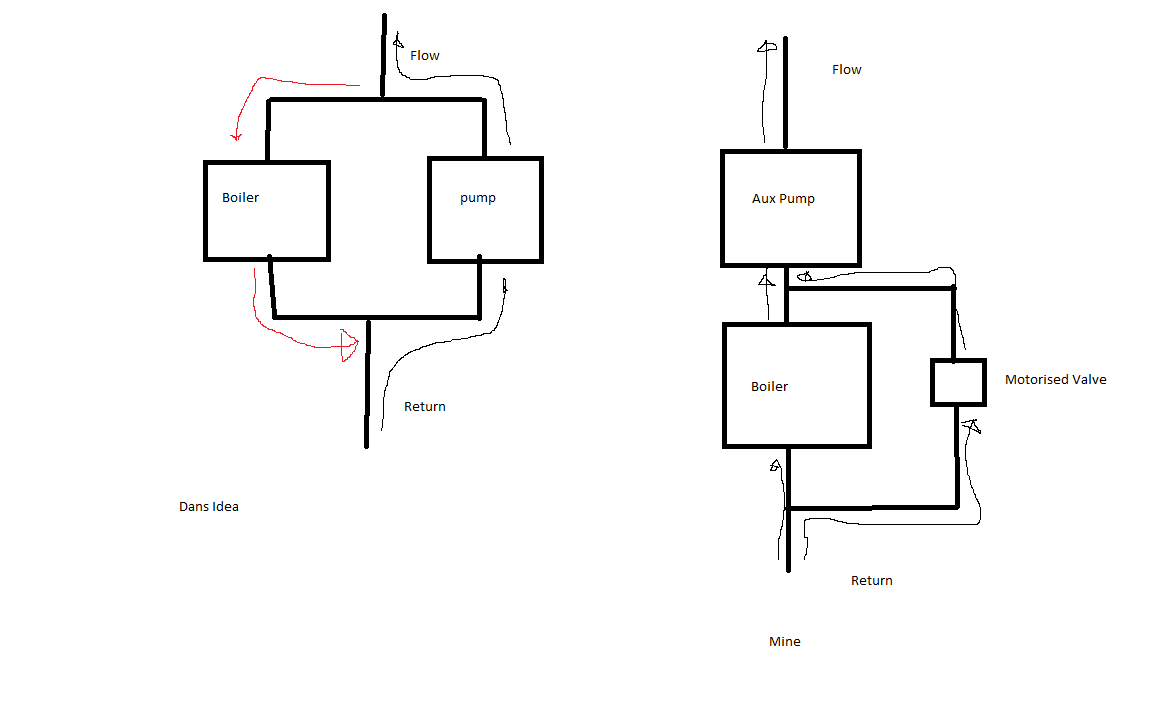I really don't understand the reason you feel it necessary to continue to try to put me down.Yes and no. Best not apply any presumptions here from you part as you have no idea how all this works.
Yes I first considered this, however I was concerned that when the boiler is off it the secondary pump would produce a back pressure through the the boiler, like wise when the pump is off and boiler is on. Ie against the normal direction of flow, are you saying that is nothing to worry about?Easiest option would be to bridge the F&R between boiler and first take off's with a pump and NRV wired to whatever half baked controller you think will do the trick.
When the ground floor building work finished downstairs I found that boiler that was fitted was having difficulties supplying the radiators on the top floor, they are on the end of long loop through the first floor much of the run only uses 15mm pipe work, I will at some point eliminate reduce the length of the run, as I have now installed a 22mm riser directly to the second floor. However if I connect the pump I have (and yes it is rated for a 3 story house being in head pressure) in series with the boiler it should assist with the flow. Hence why I was thinking I would just install a controllable bypass for the boiler for my experiment and any the any presure through the boiler will always be in the same way it normally is.
Nah, I will end up with a better circulation in my central heating system during normal operation.But I'm telling you. This will achieve the sum total of nothing but a bigger electric bill.


